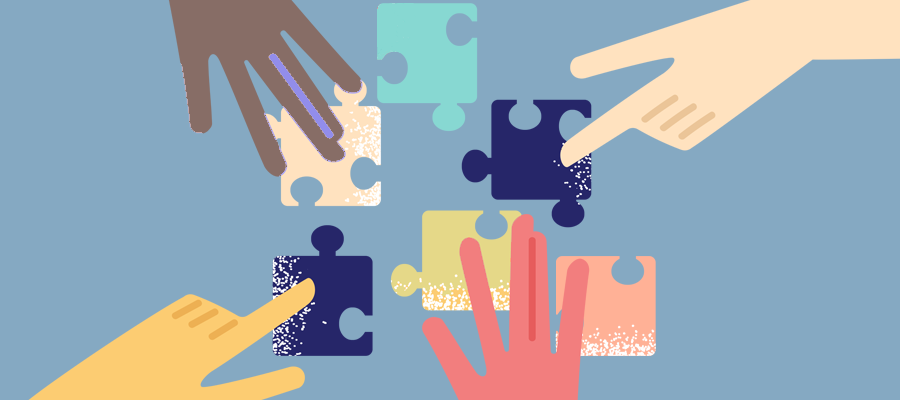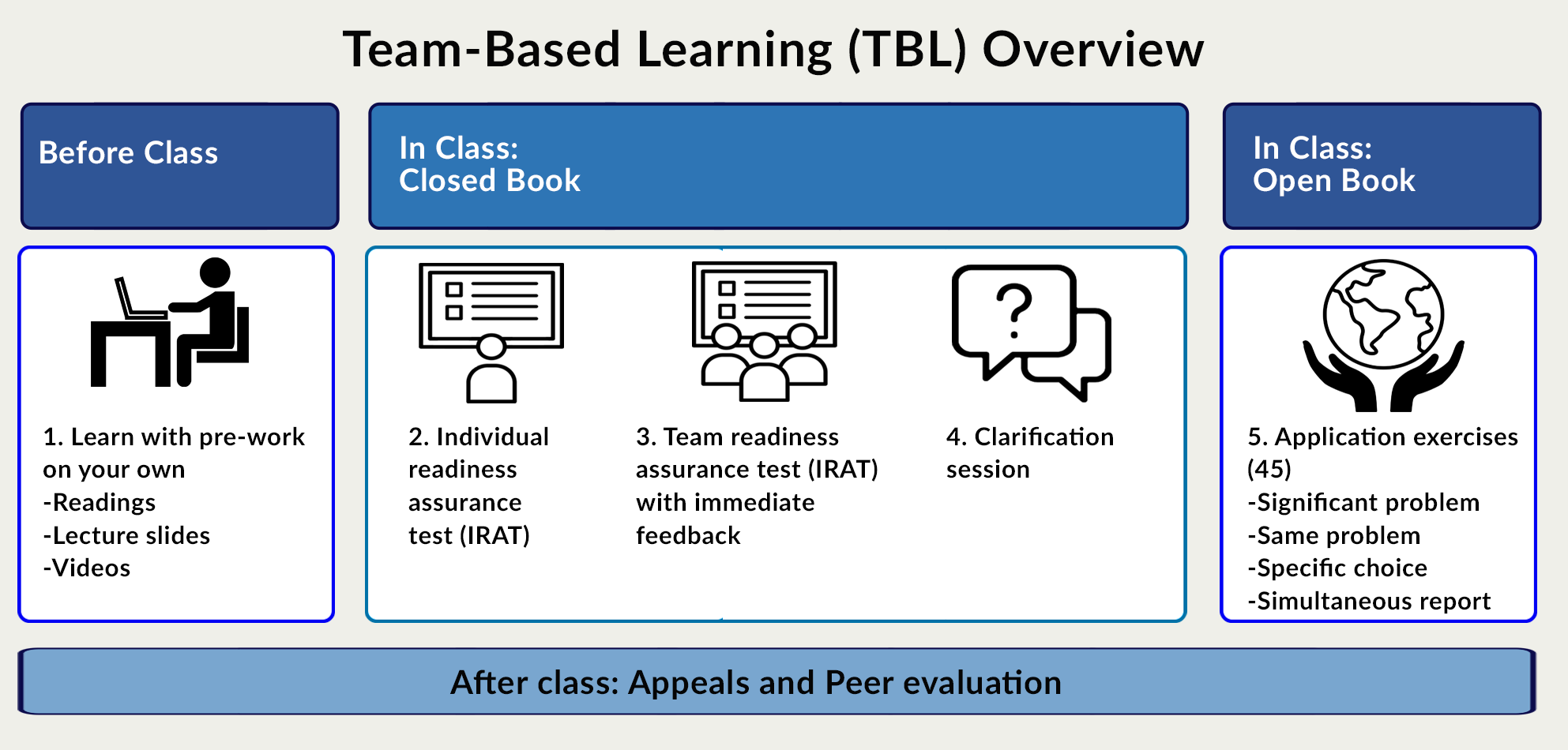
Team-Based Learning (TBL) is a flipped learning approach that centers on pre-class preparation allowing for the majority of in-class time to be devoted to the application of material to a problem through structured, small, team-based collaboration. TBL is an active learning method based on constructivist theory, where frequent interaction and discussion of a given problem among team members helps reveal misconceptions and allows learners to construct a new understanding of course material and its application. The instructor is indispensable as a guide to learners through this process. TBL is also characterized by opportunities for learner reflection on their own learning process through weekly readiness assessments tests (which can give them feedback on how to adjust their pre-class preparation) as well as through peer- and self-evaluations. The figure below represents the key components of the traditional TBL approach developed by Michaelsen and others and implemented with success in a public health course (Lang et al, 2017). For a more detailed description of the TBL steps, review this Getting Started with TBL handout from the Team-Based Learning Collaborative. Below is a description of key components that

Text for Team-Based Learning Overview
1. Pre-class preparation: learners are assigned readings and other materials to study independently before class. It is important that this content be directly aligned with the information they will need to complete the in-class team-based assignment.
2. Readiness assurance tests (RATs): these are brief in-class, closed note/books quizzes to assure that learners have studied and have a basic understanding of the pre-class material. RATs can be administered individually (iRATS) or as a team (IRATs). The traditional TBL format calls for both formats to be administered. Depending on the course, class size, and other factors, the instructor can decide whether to administer just one readiness test. When selecting only one test, in the spirit of TBL, the tRAT will provide an opportunity for interaction among learners, discussion, and debate which can further solidify learning. Using the Immediate Feedback Assessment Technique (when teaching in-person) is an excellent way to keep learners engaged and to capitalize on a rich team discussion as correct/incorrect answers are revealed in real-time.
3. Brief lecture: The instructor prepared a brief lecture to focus on the most challenging concepts based on previous experience. Additionally, a quick scan of the tRAT score will reveal in real-time additional areas that learners are struggling with from that week's pre-class material.
4. Team assignments: The majority of class time will be spent on a team assignment that is thoughtfully prepared by the instructor in advance and that aligns with the content that the learners have studied in their pre-class preparations. This is their chance to engage with each other to apply their learning to an actual problem. Teams will report back in the large group at the end of class. To maximize engagement throughout, TBL suggests structuring the assignment using the 4S framework:
- Significant problem
- Same problem
- Specific choice
- Simultaneous reporting
Depending on course content and teaching modality, the 4S framework may not always be easy to apply. Feel free to modify these elements to fit your course context.
Key TBL Elements:
1. Team composition: Ideally, teams should consist of 5-7 learners. Any important attributes that are important to success in your course should be distributed across teams (e.g. if having previous research training experience is an asset, make sure learners with this experience don't all end up on the same team; this may require that you conduct a pre-course survey). Teams must remain in the same configuration throughout the semester. This allows them to build cohesion and to learn and adapt to each others' learning styles. It is important to build in some time and guidance, especially at the start of the semester, for teams to establish team rules and to establish team norms for working with each other. Lastly, be prepared to navigate situations when teams have conflicts that they are unable to resolve.
2. Peer evaluation and self-reflection: These are important components of any course, but TBL in particular. Build in time at mid-semester for peer evaluations and debriefing with each other. This allows teams to course-correct if needed for the second half of the semester. Also, allow time at end-of-semester to debrief and reflect on their team experience. This is also an opportunity to ask for a brief self-reflection that focuses on their perceived learning, what has changed in their habits, study skills, if anything, how they approach teamwork, etc.
What is the difference between Team-Based and Problem-Based Learning?
1. In TBL the instructor directs learners to the content that they need to study; learners are responsible for studying the assigned content; then they apply it to a problem that is prepared by the instructor. In contrast, in PBL, a problem is presented and the learners have to figure out what they need to know to address the problem, where they can get the information, research the information, apply the information to solve the problem and go through an iterative process of getting more information if needed until a satisfying solution is achieved.
2. The problems presented in TBL are not necessarily authentic, real-world problems. In PBL, having an authentic problem is the defining characteristic of the learning approach.
References
Michaelsen, LK, Sweet, M. (2008). The essential elements of team-based learning. New Directions for Teaching and Learning, 116, 7-27.
Lang, DL, Walker, ER, Steiner, RJ, Woodruff, RC (2017). Implementation and mixed-methods evaluation of Team-Based Learning in a graduate public health research methods course. Pedagogy in Health Promotion, 4(2), 140-150.

